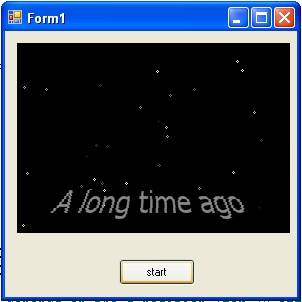Primo “vero” momento di “crisi” per KOS. L’applicazione va in eccezione – con tempistica o azione del tutto causale – con “ORA-03113 end-of-file on communication channel”.
Vengono fatte tutte le analisi e le ipotesi del caso, risultato: nulla!, il problema continua a persistere.
E’ qui che comincia la crisi, non si riesce a capire quale sia il problema e quindi nemmeno a trovare una soluzione. L’unica cosa di cui siamo certi – analizzando i log – è che il problema è iniziato il giorno 13 Dicembre alle 13 circa. Quindi azzardiamo qualsiasi ipotesi:
Pensiamo che sia KOS:
Anche se non ci crediamo molto, l’ultima release è stata fatta giorno 12 con una release note veramente scarna: solo qualche minor bug fixing.In quanto, concentrati sulla release del nuovo modulo di MAGAZZINO/FARMACIA. Facciamo tutti i controlli del caso, risultato: nulla!
Pensiamo che sia il nuovo SERVER PACS :
Hanno da poco installato un nuovo server che fungerà da PACS. Ipotizziamo che non sia stato configurato bene oppure che il transfer di immagini sia troppo oneroso e provochi problemi. Abbiamo provato a staccarlo, risultato: nada!
Pensiamo che sia ORACLE:
Attiviamo tutti i log possibili ed immaginabili e consultiamo tutti i tips del caso, i vari forum, e quant’altro ci possa dare una mano. Devo dire che oracle permettere di indagare veramente a fondo, al punto di poter “tracciare” i singoli pacchetti inviati nella comunicazione client-server.
Qui di seguito alcuni link di riferimento:
http://www.orafaq.com/wiki/Sqlnet.ora
http://www.orafaq.com/faqnet.htm
http://www.oracle-base.com/articles/misc/OracleNetworkConfiguration.php
http://download.oracle.com/docs/cd/B14117_01/network.101/b10775/troublestng.htm
http://forums.oracle.com/forums/thread.jspa?messageID=2256122î›
Ma senza nessun risultato.
Pensiamo che sia il SERVER che ospita ORACLE:
Ma non troviamo alcun log che possa indicarci qualche malfunzionamento. Risutato: buio completo!
Pensiamo che sia lo SWITCH che collega i SERVER alla rete:
Ma anche qui facciamo “quasi” un buco nell’acqua, troviamo un cavo difettoso (per una scheda secondaria di un altro server). Risultato: nulla di che!
Oramai siamo in preda alla follia, azzardiamo qualsiasi ipotesi anche senza senso, torniamo a pensa che sia ORACLE:
Magari qualche query errata, o comunque qualcosa che impegni il db cosi tanto da far cadere le connessioni. Un corruzione di indici. Risultato: ancora niente.
Torniamo a pensare che sia un problema di rete:
Attiviamo ethereal, pensiamo che qualche macchina mandi pacchetti anomali provocando disconnessioni o che le workstation del pacs dia problemi. Risultato: boh!
Giorno 20 Dicembre, siamo distrutti, facciamo ipotesi che potrebbero essere definite ‘fantasiose’: “attacco DOS”:
Stacchiamo firewall, e quant’altro, siamo esclusi dal mondo esterno. Sono le 19.03, oramai c’è solo silenzio. Quando all’improvviso: “drin! drin!”. Il telefono!… direte voi! Non può essere! … abbiamo scaricato i cordless a furia di telefonate da parte degli operatori e dei medici che non riuscivano lavorare. Allora cosa ?… una cosa che ci ha inquietati tutti! Squillava un contatto skype di un collega! Tutti in coro: ma come !?! siamo scollegati da internet. A me viene i mente scene di un film come “the ring”. Un collega ha scritto come topic sul suo contatto skype:”una chiamata dall’aldilà “.
Veniamo a scoprire tramite un tracert dell’esistenza di un router “sconosciuto”. Indagando, scopriamo che tale router è stato proprio installato in concomitanza con l’inizio dei nostri problemi. Come potete intuire, è un router che non dovrebbe proprio essere presente nella nostra rete e ci collegava in “malomodo” ad un’altra rete che non ha nulla a vedere con la nostra.
Risultato: Scollegandoci da quel router maledetto si è risolto il problema.
Fletto i muscoli e sono nel vuoto !
ps. Buon Natale a tutti 😀




